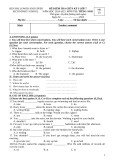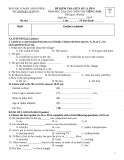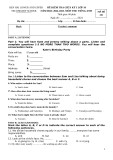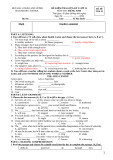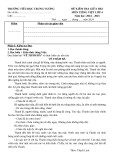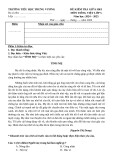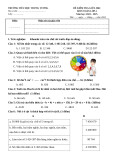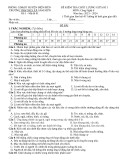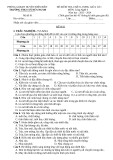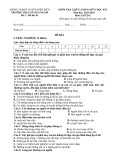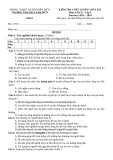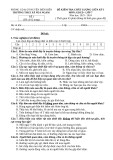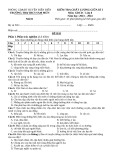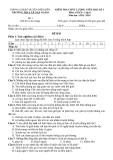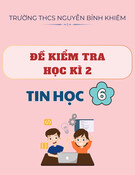
SỞ GD&ĐT ĐẮK LẮK
TRƯỜNG THPT LÊ HỒNG PHONG
(Đề thi có 04 trang)
ĐỀ KIỂM TRA, ĐÁNH GIÁ GIỮA KÌ I
NĂM HỌC 2023 - 2024
MÔN : ENGLISH – Khối lớp 11
Thời gian làm bài : 60 phút
(không kể thời gian phát đề)
Full Name : ........................................................................... Lớp: ...................
I. LISTENING (2pts)
1. Listen to the tape and decide whether the following statements true or false by circling T (true) or F
(false) : (1p)
Question 1. Parents always find it easy to talk to their teenage children.
A. True
B. False
Question 2. Parents shouldn’t watch for danger signs in some teenagers who may smoke or try using drugs or alcohol.
A. True
B. False
Question 3. Teenagers hate questions that aim to check up on them.
A. True
B. False
Question 4. Parents shouldn’t find ways to talk to their teenage children about work and future plans,
A. True
B. False
2. Listen and fill in each blank with only a missing word. (1p)
According to the pessimistic viewpoint, our future cities will not be safe and……(5) ….. places to
live in. Governments have no effective ways to control pollution, which will continue to be a serious
problem in the future. Moreover, cities will become…..(6)…, which means there will be more waste and
heavier traffic.
According to the optimistic viewpoint, city dwellers will have a better life thanks to advances in……
(7) ... and medicine. Furthermore, the environmental problems will be solved. renewable energy sources will
gradually …..(8) ….. fossil fuels in the next twenty years.
Write your answers here:
Question 5: ………………………..
Question 6: ………………………..
Question 7: ………………………..
Question 8: ………………………..
II. READING (1,25 pts)
Read the following passage and mark the letter A, B, C, or D to indicate the correct answer to each of
the questions.
Where smart cities were once regarded purely as a vision of the future, they are now becoming a reality in
numerous urban centres across the globe. From Dubai, Singapore, Amsterdam, Copenhagen, and Madrid to
Mã đề: 135





